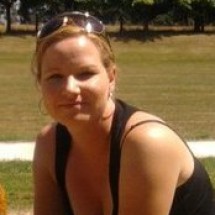Home › Forums › General Discussion › Hot water temperature recommendations
- This topic has 9 replies, 6 voices, and was last updated 8 years, 12 months ago by
alexking.
-
AuthorPosts
-
April 27, 2015 at 1:01 am #2116
Michael Gaffney
ParticipantHi
having remembered the HPA training level 1 recommendation that HW temps be set to 60 degrees Celsius, which is also in the Beacon Fact Sheet on Savings with HW and on the EECA site under simple ways to save on HW. So when I said my water was at 60 degrees at the tap in their “how energy efficient is your home” tool it said
“Your cylinder is set to the right temperature, but it also pays to check the temperature at a hot water tap near your cylinder. It shouldn’t be higher than 55° Celsius to avoid the risk of burns. If it’s much lower or higher than 55° Celsius it may indicate a problem with your thermostat or your tempering valve (if you have one) and a plumber can determine if there’s a problem and fix it.”
I assume it is the lack of a tempering value that generates this. Hey my water cylinder is 40 years old. If people are not in a position do anything quickly about putting in a tempering valve what do we suggest, lower the temp with the thermostat or leave at 60?
MichaelApril 27, 2015 at 10:46 am #2117 Scott WillisParticipant
Scott WillisParticipantHi Michael,
We need to be particularly careful around temperature for very young children and the elderly, who are more at risk from burning from hot water than the rest who can usually tell if the water coming out of the tap is very hot. 5 degrees hotter that 55 degrees isn’t big, and I wouldn’t worry about it. At our house (with teenagers) we work to get much hotter water from the tap because we love very hot showers and because our hot water is heated by wetback and solar, so we have plenty.So I’d say – assess who is in the house, and what risk they are at, and how well they appreciate the risk. Getting a plumber in to try to get it to an even 55 degrees at the tap is going to be costly – because it is very hard to calculate % of heat loss between the cylinder and the tap – and that can easily change with improved lagging, etc. So only recommend a plumber if really necessary.
I’d be interested in what others think about this..
April 28, 2015 at 9:51 am #2118philgregg
ParticipantHi Michael
It is recommended that the HWC is set at 60 degrees to kill off off Legionnaires. The average loss of Temperature from the tank to the tap is 5 degrees – hence why it is suggested that the tap temperature needs to be at 55 degrees.
Should we worry about it if it is higher than 55 degrees… Maybe
A. Hotter is dangerous
B. Scott suggested the energy saving of the 5 degrees is minimal. But that depends on how much hot water one is using. The average house hold is spending around $100 a month on hot water. The financial saving by reducing the tap hot water is around 9%, that is $9 a month 0r $108 per year. Little movement can add up.
C. I would suggest you have a low pressure hot water system based on the information you have provided. I typically find that with low pressure you have to run the cylinder hot to ensure you get an adequate shower….. So if you do teak the thermostat then don’t be surprised if your shower temperature is inadequate and you need to put the temperature back up.To pick up on Scott’s point about lagging. Try and lag the first 1 1/2 meters of piping from the hot water cylinder. More is alway helpful. ECCA suggest this will save 5% wastage.
April 29, 2015 at 2:08 pm #2119 Ian McChesneyParticipant
Ian McChesneyParticipantHi Michael
Very interesting question you pose, and can be quite tricky to get the ‘best’ solution. As Scott says, we need to be particularly careful with delivery temperatures for elderly and the very young. Indeed the delivery temps for early childhood centres, schools, old people’s homes, hospitals is 45 degrees, not the 55 degrees for homes. And in many countries the delivery temp for homes is 48 degrees. Above 55 degree the burning risk goes up exponentially with temperature, so for any at-risk part of the population this is not a trivial matter.Fitting tempering valves would likely be a very expensive option as noted, so the thermostat adjustment would be the first approach. But many older hot water systems that are low pressure and/or have small cylinders rely on high HW cylinder temperatures to get (a) sufficient hot water storage, and/or (b) a satisfactorily warm shower. As Phil notes, you may find that reducing the HW cylinder temperature compromises hot water services.
Tempering valves also have technical requirements for minimum operating pressures and minimum temperature differentials between the cylinder and the outlet. In some houses it may be quite difficult to achieve the minimum pressure requirement. And, ironically, you may have to turn up the temperature in the HW cylinder to achieve the minimum temp differential.
I would recommend you suss out a highly recommended local plumber or two and go and talk to him/her about the options. They should have some good, practical advice to offer.
A final point about energy saving from turning down temperatures. In general, for smallish temperature changes, turning down the temperature saves little. There will be some reduction in standing losses from the HW cylinder, but the difference from 60 to 55 degrees will likely be around 120kWh/yr for an unwrapped B or C cylinder (maybe $30/yr?), and less for wrapped or A grade. Regarding hot water use – given that most hot water end-uses are actually for warm water around 35-50 degrees and so rely on some mixing with cold water, unless the total amount of warm water use changes, one just ends up changing the mixing ratio of hot:cold water to achieve the same end-use, and the energy use will be the same.
regards
IanApril 30, 2015 at 10:14 am #2120 Ian McChesneyParticipant
Ian McChesneyParticipantSorry – poor wording above re the temperature saving. I’m not suggesting turning HW cylinder temperatures down to less than the recommended 60 degrees minimum. It was only to illustrate that reducing tank temperatures by 5 degrees, on its own, will not yield much energy saving.
IanApril 30, 2015 at 12:52 pm #2122Michael Gaffney
ParticipantThanks everyone, what I had not picked up was to expect a temperature differential between cylinder and tap. Otherwise I would have just kept turning up the thermostat until I was getting 60 degrees out of the tap. Now I no the temp people are going to get at the tap will vary house by house assuming the cylinder is set at 60.
My concern is to advise people in relation to health first, so limiting the likelihood of legionnaires (by setting the cylinder at 60) is first and burns (checking tap temp) is second. Yet in some households – those with young children – the likelihood of burns could be quite a bit higher than the likelihood of legionnaires. Compounded by me already advising people to lag their hot water pipes.
I will follow up by seeking out some plumbers.
MichaelApril 30, 2015 at 2:15 pm #2123 Sarah GrantParticipant
Sarah GrantParticipantHi all,
I don’t have anything constructive to add, just a quick note. My husband and I just bought our first house, and I went through it with my HPA hat on before we tendered. Amazingly I found the water at the bathroom tap (approx 6m away from the cylinder with unlagged pipes) was 64deg and still climbing when I stopped measuring – scaldingly hot. Shower pressure in this house is a truly pathetic 2L/min and the cylinder is as old as the house (1964) and has no adjustable thermostat. I haven’t seen too many hot water issues in my various assessments (apart from high use), but this shows that they’re still out there and probably not that uncommon.
Needless to say that’s the very first thing we’ll be renovating. We’re considering a heat pump hot water system since we’re upgrading the cylinder anyway. The house has just been upgraded to mains water having been on bore water until the last few months so it’s a good time to sort it out.
Great question and good discussion. 🙂
April 30, 2015 at 4:56 pm #2124philgregg
ParticipantHi Sarah
This comment is based on you future Hot Water Upgrade. I noted you are going to look at installing a hot water heat pump. Great choice. You may know this but when you do upgrade I suggest you check out the NZ heat pump Econergy for the following reasons. Sorry in advance if I am telling you how to suck eggs.
1. NZ made, which means we are supporting NZ innovation and reducing our Carbon footprint by not importing
2. Econergy received first place in the National Sustainability awards late last year.
3. Econergy has a guaranteed 66% saving over normal electric cylinders, this is confirmed by Consumer Magazine. We have had applications where it has been closer to 80% – incredible.
4. All the other Most of the Hot water heat pumps on the market will on say up to 50% or up to 60%. When I have talk to the importer asking for some conformation of energy usage they shy away. No one will guarantee the savings.
If you do use Econergy and replacing the tank I would also suggest you use the Econergy designed tank, made by Rheem.
May 1, 2015 at 9:52 am #2125 Sarah GrantParticipant
Sarah GrantParticipantHi Phil,
Thanks for the info. We hadn’t got as far as evaluating different brands yet, just the type of system we are going to go for, so that’s very helpful even though we have an econergy hot water heat pump display unit in the Environment Centre so I should have known. I have ready access to heaps of info on it, and I know the local installer which always helps confidence!
It’s great having a husband who’s an energy efficiency specialist – no convincing required for decisions like this. 😉
Cheers, Sarah
May 1, 2015 at 11:16 am #2126alexking
ParticipantHi Michael,
Acording to http://www.level.org.nz/water/water-supply/hot-water-supply/storage-cylinders/, the building code states that hot water cylinders should reach a temperature of 60 degrees at least once a day to combat Legionella. It also requires that hot water be delivered at a temperature that avoids the likelihood of scalding, with delivery at 55 degrees to sanitary fixtures in houses being acceptable.
My mother always tells the story of her young cousin, who fell in a bath of hot water as he was reaching across to turn off the hot tap. He died three days later. I don’t know anyone who’s died of Legionnaires’ Disease, although I recognise it is real. So you may pick up that I would err on the side of having the hot water not too hot.
http://www.level.org.nz/water/water-supply/hot-water-supply/ tells us that water heated to more than 50°C can cause serious burns in less than a minute. This creates risk, particularly for children (who have sensitive skin) and the elderly (who have slower reaction times).
As professionals I guess we can’t reccommend the HWC be set lower than 60 degrees, since that’s what the building code requires. But I would always be recommending a tempering valve be installed if you measure a temperature higher than 55 at the taps.
You can read Auckland public health analysis of Legionellosis at http://www.arphs.govt.nz/health-information/communicable-disease/water-borne-illness/legionellosis, where it states that about 20 cases happen per year in Auckland. I’ve read elsewhere that perhaps 20% of cases may be attributed to domestic hot water systems, although the number is not really known. If you search for cases of Legionnaires’ disease in the media, most are attributed to hotel or hospital hot water and air conditioning systems, and potting mix, not domestic HWC.
The Auckland advice states that Legionellosis rates increase with age, as well as other health risk factors such as existing medical conditions, and is almost unknown in children. While it repeats the building code advice to have HWC temperature set to 60, it also recommends to have the temperature at tap at no more than 45 where there are children or older people.
Finally, http://en.wikipedia.org/wiki/Legionella has information about the Leginella Bacteria. At 48 to 50 °C, it can survive but does not multiply, at 50 °C 90% die in 80–124 minutes, and at 60 °C, 90% die in 2 minutes. It also mentions other sources claiming that at 55 °C (all) Legionella die within 5 to 6 hours.
In my opinion, the building code level of 60 is probably set with a safety factor of 5 degrees, in case the cylinder thermostat isn’t callibrated correctly. But I would be very comfortable with my cylinder at 55, as long as I knew the temperature was at least that. (Measure the outlet temperature at the nearest outlet.). If a household has older people, I would definately be recommending a tempering valve, and keeping the cylinder at 60 to be on the safe side. Otherwise, as long as the cylinder temperature is at least 55 I wouldn’t make a recommendation. But it’s worthwile noting if tap temperatures are above 45 in households with children or older people.
There is a very real risk from the legionella bacteria if the hot water in the cylinder is less than 48 degrees for an extended period. So you can’t set the thermostat too low. However, for people with their cylinder heated at night (eg. on night rate or a time switch if there is solar thermal etc.), 6 hours at 55 should be sufficient to eliminate the risk.
-
AuthorPosts
- You must be logged in to reply to this topic.

